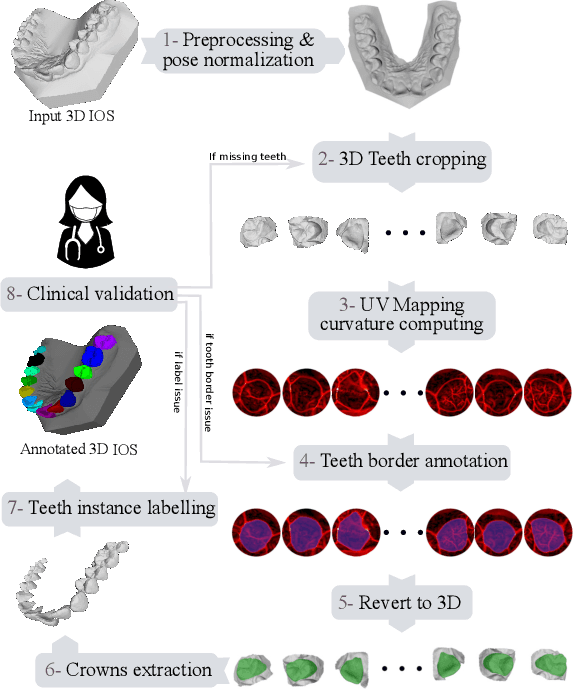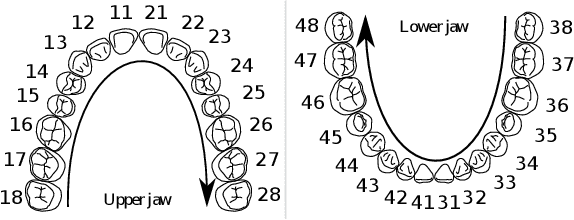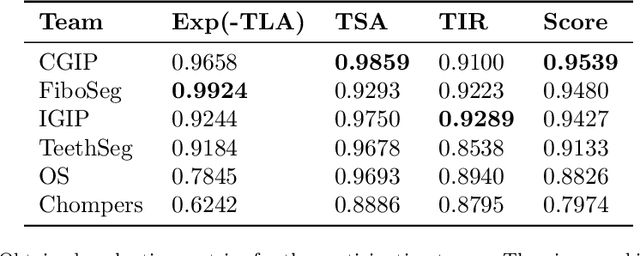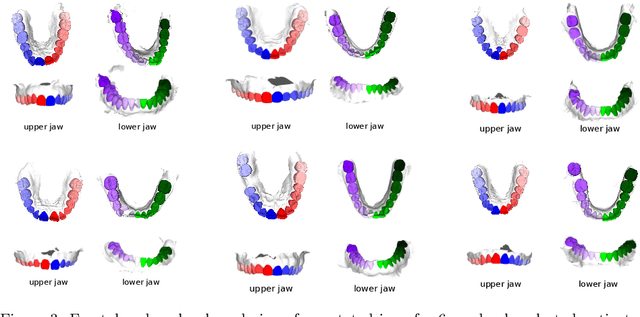Shaojie Zhuang
iPUNet:Iterative Cross Field Guided Point Cloud Upsampling
Oct 13, 2023Abstract:Point clouds acquired by 3D scanning devices are often sparse, noisy, and non-uniform, causing a loss of geometric features. To facilitate the usability of point clouds in downstream applications, given such input, we present a learning-based point upsampling method, i.e., iPUNet, which generates dense and uniform points at arbitrary ratios and better captures sharp features. To generate feature-aware points, we introduce cross fields that are aligned to sharp geometric features by self-supervision to guide point generation. Given cross field defined frames, we enable arbitrary ratio upsampling by learning at each input point a local parameterized surface. The learned surface consumes the neighboring points and 2D tangent plane coordinates as input, and maps onto a continuous surface in 3D where arbitrary ratios of output points can be sampled. To solve the non-uniformity of input points, on top of the cross field guided upsampling, we further introduce an iterative strategy that refines the point distribution by moving sparse points onto the desired continuous 3D surface in each iteration. Within only a few iterations, the sparse points are evenly distributed and their corresponding dense samples are more uniform and better capture geometric features. Through extensive evaluations on diverse scans of objects and scenes, we demonstrate that iPUNet is robust to handle noisy and non-uniformly distributed inputs, and outperforms state-of-the-art point cloud upsampling methods.
3DTeethSeg'22: 3D Teeth Scan Segmentation and Labeling Challenge
May 29, 2023



Abstract:Teeth localization, segmentation, and labeling from intra-oral 3D scans are essential tasks in modern dentistry to enhance dental diagnostics, treatment planning, and population-based studies on oral health. However, developing automated algorithms for teeth analysis presents significant challenges due to variations in dental anatomy, imaging protocols, and limited availability of publicly accessible data. To address these challenges, the 3DTeethSeg'22 challenge was organized in conjunction with the International Conference on Medical Image Computing and Computer Assisted Intervention (MICCAI) in 2022, with a call for algorithms tackling teeth localization, segmentation, and labeling from intraoral 3D scans. A dataset comprising a total of 1800 scans from 900 patients was prepared, and each tooth was individually annotated by a human-machine hybrid algorithm. A total of 6 algorithms were evaluated on this dataset. In this study, we present the evaluation results of the 3DTeethSeg'22 challenge. The 3DTeethSeg'22 challenge code can be accessed at: https://github.com/abenhamadou/3DTeethSeg22_challenge
 Add to Chrome
Add to Chrome Add to Firefox
Add to Firefox Add to Edge
Add to Edge